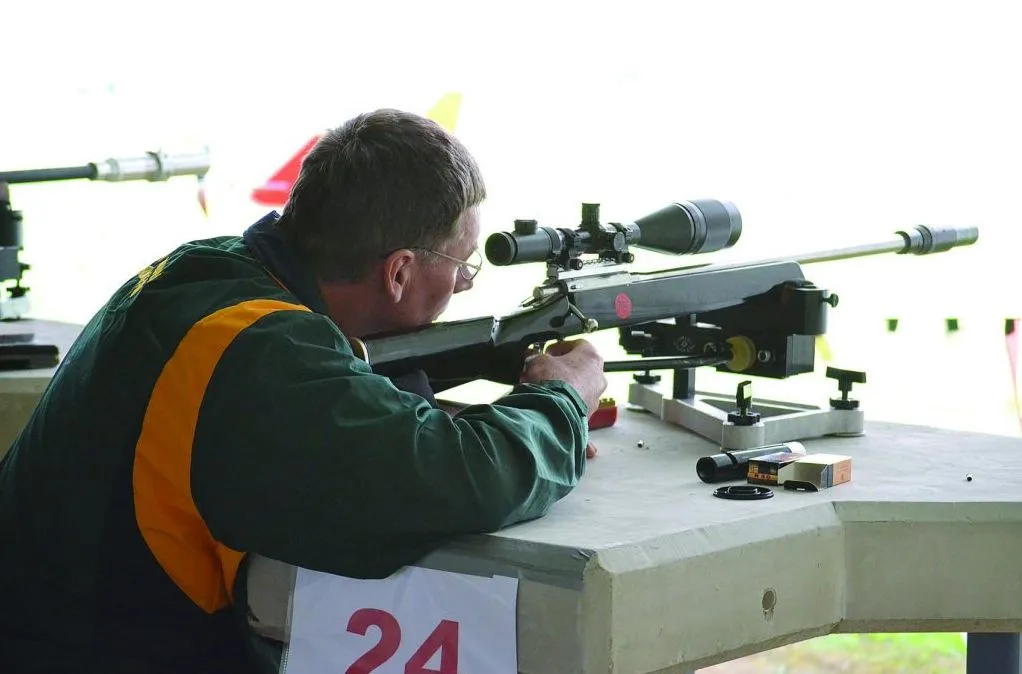OAP
Before you start to modify the harmonics of a rifle, you need to have all the attachments sorted – scope security, clearance between the barrel and stock in a free-floated barrel and the weight of the trigger.
For a target rifle, the lighter the trigger the better. There should be no effort to release it so there is no temptation to snatch at it and the less free play the better. My 6mmPPC releases at less than two ounces with just a slight touch. This would be totally unacceptable in any rifle not used exclusively on a shooting range. Around four pounds release pressure for a hunting rifle is safe. The recoil should not cause flinching either.
With all the above taken care of, the next consideration is the ammunition. With what is available off the shelf, you have limited options except to try different products until you find one that suits your purpose.
With ‘roll your owns’ you arrive at the recipe that gives the tightest groups – the combination of powder (fast burning or slow) and projectile weight. The length and weight must be compatible with the twist rate and there are tables that set this out.
The principle behind barrel tuning is difficult to describe as it involves much technical detail that I can’t follow, not having a suitable grounding in physics. There is one thing that doesn’t change, though: a worn out or poor barrel won’t magically shoot tighter groups with a tuner but a good barrel can probably be improved.
Most manufacturers now claim, with suitable ammunition, that their rifles will group better than an inch at 100 yards. This is more than adequate for a hunting rifle. A target rifle, such as the short-range 6mmPPC, needs to be able to bug hole five shots at up to three hundred yards. In other words, a group with a spread of 0.150” at 100 yards would be needed to be competitive. On our ranges with difficult wind conditions, 0.250” should be expected. My PPC put three shots testing a load into 0.0495” and another combination into 0.0890”.
So how do you improve the consistency of the groups?
This is where the complications of barrel dynamics come in. As I understand it (sort of) the barrel vibrates with the input of trigger release, firing pin strike and combustion. It is thought that the vibrations are around 0.003” in length. The barrel also has harmonic waves with several nodes along the length. The amplitude of these is dependent on the thickness of the barrel, whether tapered (as in a hunting rifle) or parallel as in a target rifle. My CZ 527 .222, which I will use as the model, has a tapered barrel down to 5/8". The Feinwerkbau .22 has a straight 22mm barrel.
The normal way to tune the heavy barrel is to concentrate on the vibrations as the barrel whip is less significant, so a proprietary tuner, such as the Australian Huntsman, is fitted over the end of the barrel and the dampening weight is adjusted by trial and error a thou at a time, and, likewise, the heavier tuners on the end of the barrel. One of our shooters machines his own and there are a number in use in the club. I tuned the Huntsman so that the FWB shot 100.09 and 100.10 in the last competition indoors. With my CZ457MTR, which has a 22mm straight barrel, I used a different method of tuning. It went down from a three-shot control group of 0.170” down to 0.030".
So how did I do that? This was using the method which I used on the tapered barrel (and will try on the Grendel which has a straight barrel also). The tuners on the end of the barrel worked on the vibrations. This one tries to tame the nodes and barrel whip. So first you have to find the nodes – the dead spots where all the vibrations coincide. I found three on the rifle roughly dividing the length in thirds. The first under the scope, second in front of the fore end and the third almost at the muzzle.
One company, LimbSaver, market a synthetic donut to slide over the end and advise setting it an inch from the end, firing shots to test the spread and moving it closer to the chamber in half inch steps. Don’t do that: you waste a lot of ammunition for no reason. First find the node and then shoot.
To find the node, first tap (gently) with a metallic object such as a screwdriver shaft working along the barrel. When you find a spot where the sound is well defined and clear, mark it with a felt pen and move along to the next clear sound. Mark that too. Divide the distance between them and mark that, too: this is where the sound should be fuzzy and hollow. This is the place where the vibrations are the widest (greatest amplitude) and the place where they need to be tamed. I use an inexpensive shaft collar (bought from Blacks Fasteners) that matches the diameter of the barrel. Sixteen mm equates to 5/8” and 22mm to 7/8”. These fit reasonably.
Put the collar on the barrel at that point and nip it up. Carry on with tapping and compare the sound each side of the collar and move it forward or back until the sound is the same. If it is, you have killed the vibration. Then fire a group of shots to check the placing and be prepared to move the collar in or out very slightly until you find the best result.
This worked for me. My explanations might not be scientifically accurate, but the practical application worked. The CZ 527 .222 went from a control group of 0.500” at 50 yards down to 0.296”, which I will settle on. It worked for two different combinations: the 2207 powder with 45gr Sierra and the 52gr Speer HPBT with 8208. This second one had never gelled up to that.
So, yes. The tuners worked for me and I have yet to try the Grendel with the target barrel that already groups one inch at 100yards. Will it do better? Stay tuned.





